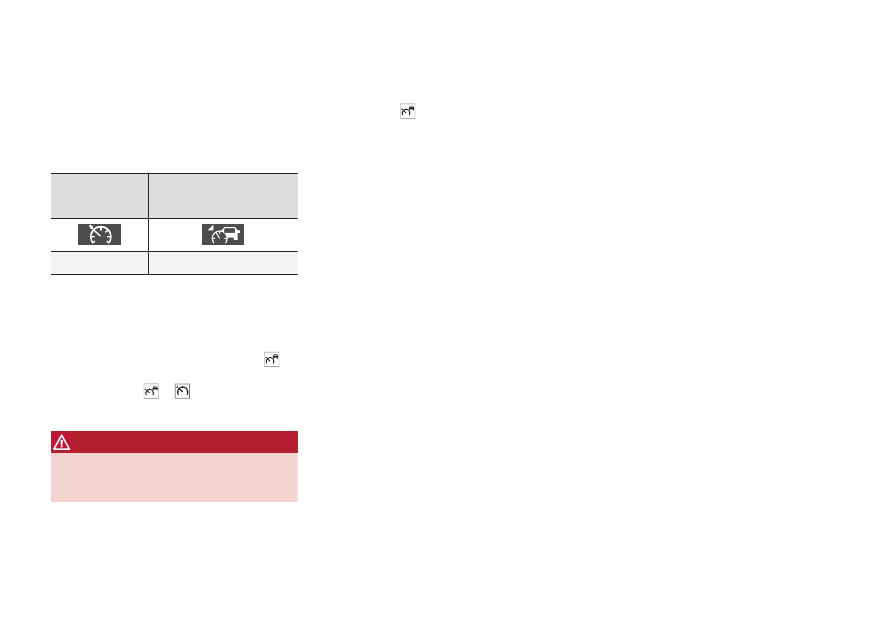Volvo V40 (2018 year). Manual - part 12

DRIVER SUPPORT
* Option/accessory.
212
Adaptive cruise control* - switch
cruise control functionality
Changing from ACC to CC
A symbol for active cruise control is shown in the
combined instrument panel:
CC
Cruise Control
ACC
Adaptive Cruise Control
Cruise control
Adaptive cruise control
With one press of the button the adaptive ele-
ment (spacing system) in the adaptive cruise
control (p. 203) is deactivated, at which point the
car only follows the set/stored speed.
•
Hold down the steering wheel button
-
the combined instrument panel's symbol
changes from
to
.
>
This activates Cruise Control CC.
WARNING
The car no longer brakes automatically after
switching from ACC to CC - it merely follows
the set speed.
Changing back from CC to ACC
Switch off the cruise control (CC) with 1-2
presses on the
button. The next time the sys-
tem is switched on it is the adaptive cruise con-
trol (ACC) that is activated.
Related information
•
•
•
vation, and standby mode (p. 208)
•